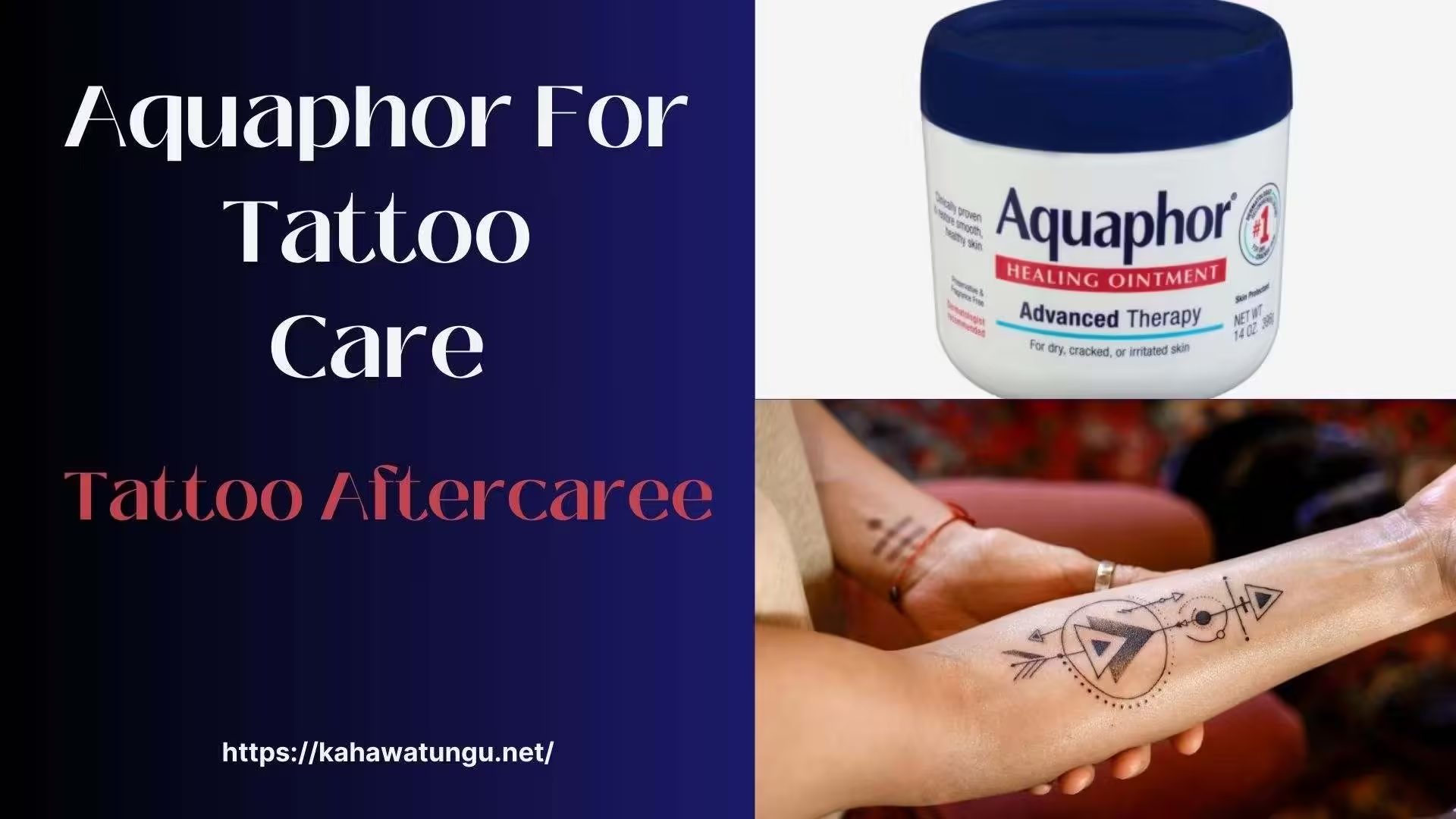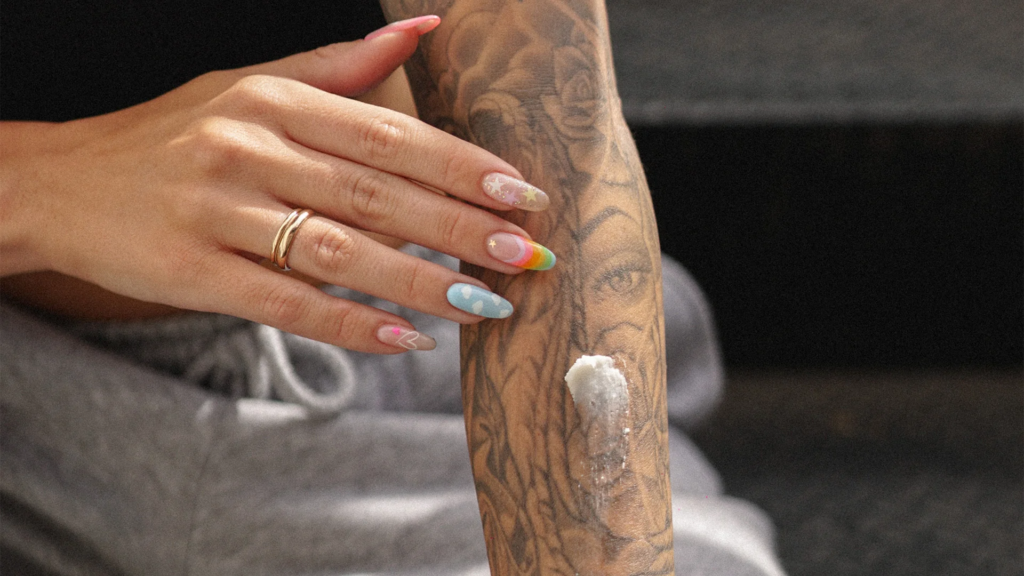Aquaphor For Tattoo Care: A Complete Guide to Healing and Protecting Your New Ink

Aquaphor for Tattoo have long been a form of personal expression and art, with millions of people worldwide choosing to get inked. However, the process doesn’t end when you leave the tattoo studio. Proper aftercare is essential for ensuring that your tattoo heals well, looks vibrant, and lasts a lifetime. One of the most widely recommended products for tattoo aftercare is Aquaphor, a brand of healing ointment that has been a go-to for both dermatologists and tattoo artists for years.
In this article, we’ll break down everything you need to know about using aquaphor tattoo aftercare. From its benefits to detailed instructions on how to apply it during the healing process, this guide will provide you with clear, easy-to-understand information. Whether you’re new to tattoos or a seasoned collector, understanding how to use Aquaphor effectively will help keep your ink looking fresh and your skin healthy.
What is aquaphor for tattoo?
Aquaphor is a petroleum-based ointment that is designed to heal and protect the skin. It contains petrolatum (41%), along with glycerin, panthenol, and bisabolol, which are all ingredients known for their moisturizing and healing properties. Aquaphor is a thick, occlusive ointment, meaning it forms a protective barrier over the skin to lock in moisture and prevent external irritants from getting in.
It’s widely used to treat dry or cracked skin, minor burns, and, most notably for our purposes, healing tattoos. While some people confuse Aquaphor with Vaseline (also petroleum-based), Aquaphor contains additional healing ingredients that make it more effective for skin repair, especially after tattoos.
Why Use aquaphor for tattoo?
When you get a aquaphor for tattoo, the needles puncture your skin and deposit ink into the dermis layer. This process creates small wounds that need time to heal properly. Failing to care for your tattoo can result in infection, scabbing, scarring, and a less vibrant appearance.
Aquaphor’s role in tattoo aftercare is simple yet powerful. It creates a protective layer over the tattoo, keeping out bacteria and contaminants while allowing your skin to breathe. By locking in moisture, Aquaphor helps prevent excessive scabbing and itching, which can lead to complications in healing.

Here are some key reasons why Aquaphor is highly recommended:
- Moisturization: Keeping the skin moisturized is essential to the healing process. Aquaphor is excellent at providing long-lasting moisture without over-saturating the tattoo.
- Protection: The ointment forms a shield against bacteria, dirt, and other pollutants that could cause infection in your fresh tattoo.
- Soothing Effect: Many users report that Aquaphor provides relief from the itchiness and discomfort that often accompany the tattoo healing process.
- Enhanced Healing: The ingredients in Aquaphor, such as panthenol and bisabolol, work to promote skin regeneration, speeding up the healing process and reducing redness and swelling.
When and How to Use Aquaphor for Tattoo?
The First 24 Hours:
Immediately after getting a aquaphor tattoo, your artist will clean the area, apply a thin layer of ointment (often Aquaphor), and cover it with a bandage or plastic wrap. The wrap keeps bacteria and contaminants away from the open wound, preventing infection.
After 2-4 hours (or as instructed by your artist), you should remove the wrap and wash the tattoo gently. This first wash is crucial to remove any excess ink, blood, and plasma. Use lukewarm water and a fragrance-free, mild soap, such as Dove or Dial.
Here’s how to do it step-by-step:
- Clean Hands: Always wash your hands thoroughly before touching your tattoo.
- Gentle Wash: Wet your tattoo with lukewarm water. Apply a small amount of soap to your hand and gently wash the area in circular motions. Do not scrub or use a washcloth.
- Rinse Well: Make sure to rinse all the soap away thoroughly.
- Pat Dry: Use a clean paper towel or a soft cloth to gently pat the tattoo dry. Do not rub the skin, as it can cause irritation.
- Rest Period: Let the tattoo air dry for about 10 minutes before moving on to the next step.
Applying Aquaphor:
Once your tattoo is clean and dry, it’s time to apply a thin layer of Aquaphor. This should be done several times a day during the first 2-3 days of healing. Here’s how:
- Scoop a Small Amount: You only need a pea-sized amount of Aquaphor. It may seem like very little, but a thin layer is sufficient.
- Spread Evenly: Gently spread the Aquaphor over your tattoo. Make sure it’s thin enough that the tattoo can still breathe but thick enough to provide moisture.
- Avoid Over-Application: Applying too much Aquaphor can suffocate the skin, prolonging the healing process and causing issues like clogged pores, which can lead to bumps or pimples around the tattoo.
- Reapply as Needed: Depending on how dry your tattoo feels, you may need to reapply Aquaphor 3-4 times per day. Always wash your hands before touching the tattoo and be gentle.
Transition to a Lighter Moisturizer:
After about 3 days, the tattoo will start to form scabs and peel slightly. This is completely normal and a sign that your body is healing. During this time, you should begin to phase out the use of Aquaphor. While Aquaphor is excellent for the initial stages of healing, using it for too long can lead to clogged pores and excessive moisture, which can hinder the tattoo’s progress.
As you transition, switch to a lighter, fragrance-free lotion such as Lubriderm, Aveeno, or Cetaphil. Apply this lotion 2-3 times a day until the tattoo has fully healed.

Common Issues and Mistakes to Avoid:
Using Aquaphor on your tattoo might seem straightforward, but there are a few common pitfalls to be aware of:
- Overusing Aquaphor: As mentioned earlier, too much Aquaphor can clog pores and cause small, white bumps to appear around the tattoo. To avoid this, always apply a thin layer and wipe off any excess with a clean paper towel.
- Touching Your Tattoo with Dirty Hands: Your tattoo is essentially an open wound, and touching it with unclean hands can introduce bacteria and cause infections. Always wash your hands before applying any ointment or lotion.
- Skipping Washes: Some people believe that keeping a layer of Aquaphor on the tattoo at all times is sufficient for healing. However, cleaning your tattoo is crucial for preventing infection and removing dead skin cells, dried blood, and plasma that can impede healing.
- Ignoring Signs of Infection: If your tattoo shows signs of infection, such as extreme redness, swelling, warmth, or pus, stop using Aquaphor immediately and consult a healthcare professional. While Aquaphor can prevent infection, it cannot treat one.
How Long Should You Use Aquaphor For Tattoo?
Aquaphor is typically used for the first 2-3 days after getting a aquaphor , during the initial healing phase. After this period, your tattoo will begin to scab and peel, and you should switch to a lighter, fragrance-free moisturizer. Overusing Aquaphor after the first few days can cause issues like clogged pores and excessive moisture, which may prolong the healing process.
Other Tattoo Aftercare Tips:
While aquaphor is a key part of the aftercare routine, it’s not the only step in ensuring that your aquaphor tattoo heals well. Here are a few additional tips:
- Avoid Soaking: During the healing process, avoid soaking your tattoo in water. This includes baths, swimming pools, hot tubs, and the ocean. Water can introduce bacteria into the tattoo and cause infections.
- Stay Out of the Sun: Direct sunlight can fade your tattoo and irritate the healing skin. If you must be in the sun, cover your tattoo with clothing. Once the tattoo is fully healed, apply sunscreen with a high SPF to protect it.
- Do Not Scratch or Pick: Your tattoo will itch as it heals, but scratching can remove the scabs prematurely, resulting in patchy ink and possibly even scarring. Tap the area gently if you need relief, but avoid picking at the skin.
- Wear Loose Clothing: Tight clothing can rub against your fresh tattoo, causing irritation and potentially pulling off scabs. Opt for loose, soft clothing during the healing process.

For more designs please check:
- polynesian tattoo design
- samoan tattoo designs
- samurai tattoo designs
- san judas tadeo tattoo design
- attractive front neck tattoo designs female
- butterfly tattoo
- tattoo ideas for men
- semicolon tattoo
Conclusion: Is Aquaphor For Tattoo the Right Choice?
Aquaphor is an excellent choice for the first few days of tattoo healing due to its moisturizing and protective properties. Its thick consistency ensures that the tattoo stays hydrated without being exposed to external contaminants. By keeping your tattoo moisturized, Aquaphor helps prevent scabbing, itching, and other complications that could interfere with the healing process.
Remember, while aquaphor is a great starting point, it’s essential to transition to a lighter lotion once your tattoo begins to heal further. Proper care and patience are critical for ensuring that your tattoo remains vibrant and clear for years to come. For more info visit kahawatungu.net





